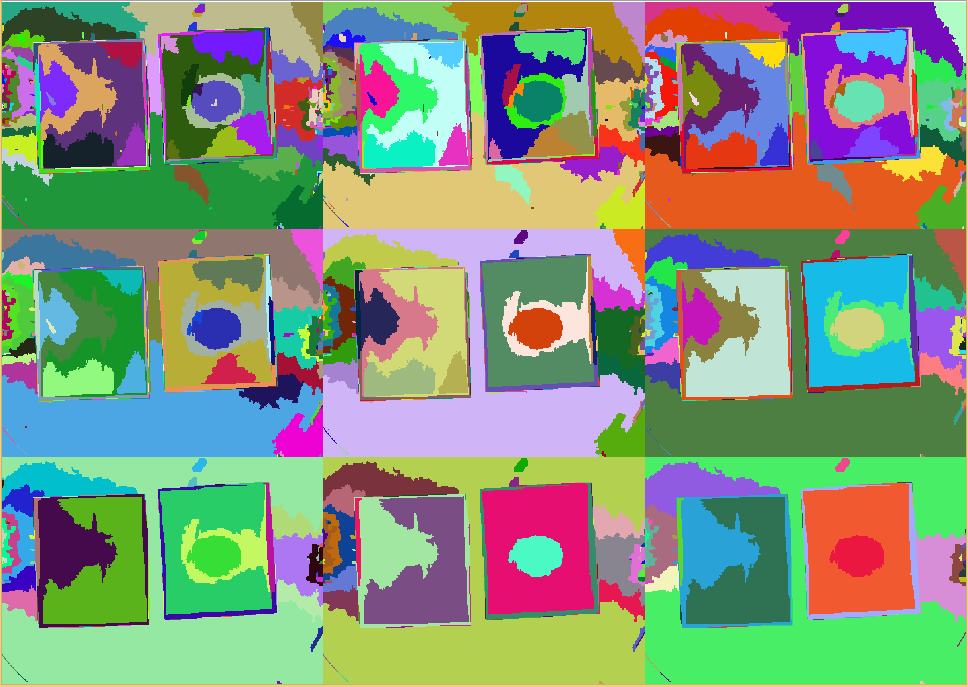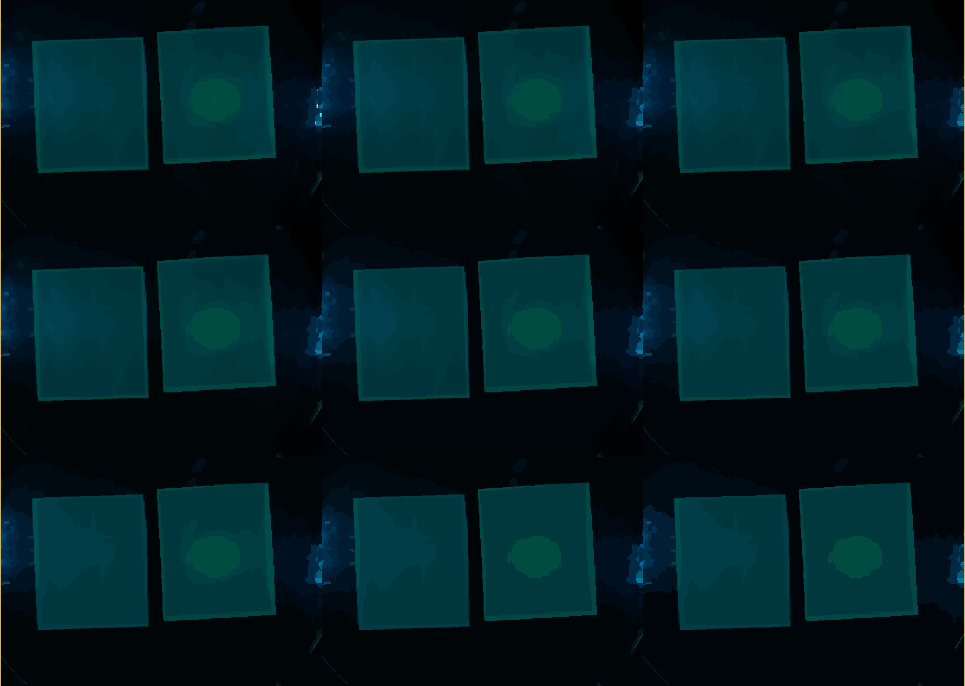Team:Aachen/Notebook/Software/Measurarty
From 2014.igem.org
(→Smoothness Index) |
(→Automatic Classification) |
||
| Line 192: | Line 192: | ||
</div> | </div> | ||
</html> | </html> | ||
| + | |||
| + | == Smoothness Index == | ||
| + | |||
| + | For position prediction in virtual environments, jitter or noise in the output signal is not wanted while often present. | ||
| + | Since discovering smooth areas is a similar problem to jitter detection, a simple method for determining jitter can be used to measure non-jitter, smoothness [1]. | ||
| + | It is assumed that jitter-free areas of a position signal do not differ in velocity. | ||
| + | |||
| + | Smooth areas don't differ in intensity, and therefore only low changes in velocity (intensity change) can be recorded. | ||
| + | For the reduction of noise, this operation is performed on the smoothed input image. | ||
| + | Then the smoothness $s$ of a pixel $p$ can be determined as: | ||
| + | \begin{equation} | ||
| + | s(p) = \sum\limits_{p' \in \mathcal{N}_k} \nabla(p') / \arg\max\limits_{p} s(p) | ||
| + | \end{equation} | ||
| + | |||
| + | Using a thresholding, $TS_l \leq s(p) \leq TS_h \wedge TI_l \leq I \leq TI_h$, different areas, such as background or pathogene, can be selected. | ||
| + | |||
| + | For the empirical choice of thresholds it can be argued that these are hand tailored to the specific case. | ||
| + | While this surely is true to a certain extent, the here presented method has been successfully tested on images from a completely different domain, and no changes to the thresholds have been made to make it work. | ||
| + | A proper theoretical evaluation is emphasized, however probably is not the aim of the iGEM competition. | ||
| + | |||
| + | Finally selecting for the red region, this delivers the location of possible pathogenes. | ||
| + | Since the size of the agar chips is variable but fixed, a quantitative analysis can be performed by counting pixels for instance. | ||
| + | |||
| + | [1] Joppich M, Rausch D, Kuhlen T. Adaptive human motion prediction using multiple model approaches. In: Virtuelle und Erweiterte Realität, 10. Workshop der GI-Fachgruppe VR/AR. Shaker Verlag; 2013. p. 169–80. | ||
| + | |||
| + | |||
{{Team:Aachen/BlockSeparator}} | {{Team:Aachen/BlockSeparator}} | ||
Revision as of 23:08, 15 October 2014
|
|
|
|
|
|
 "
"

